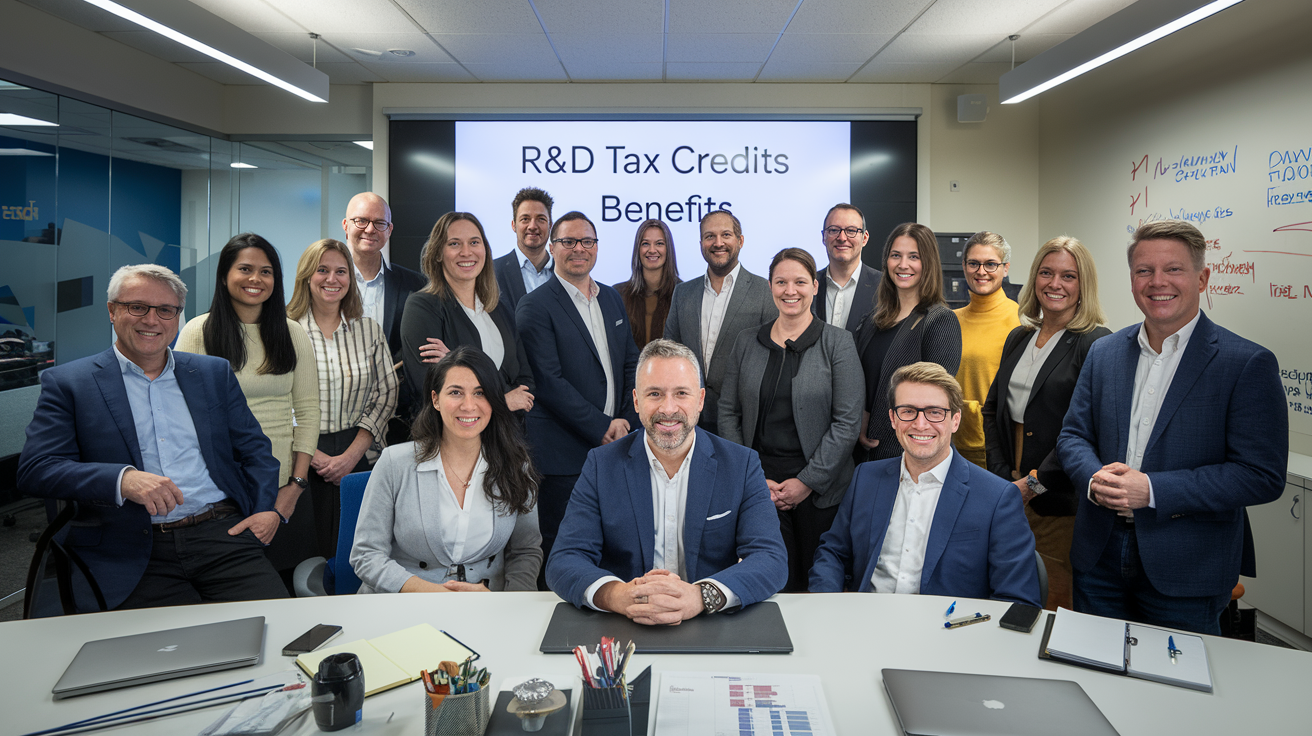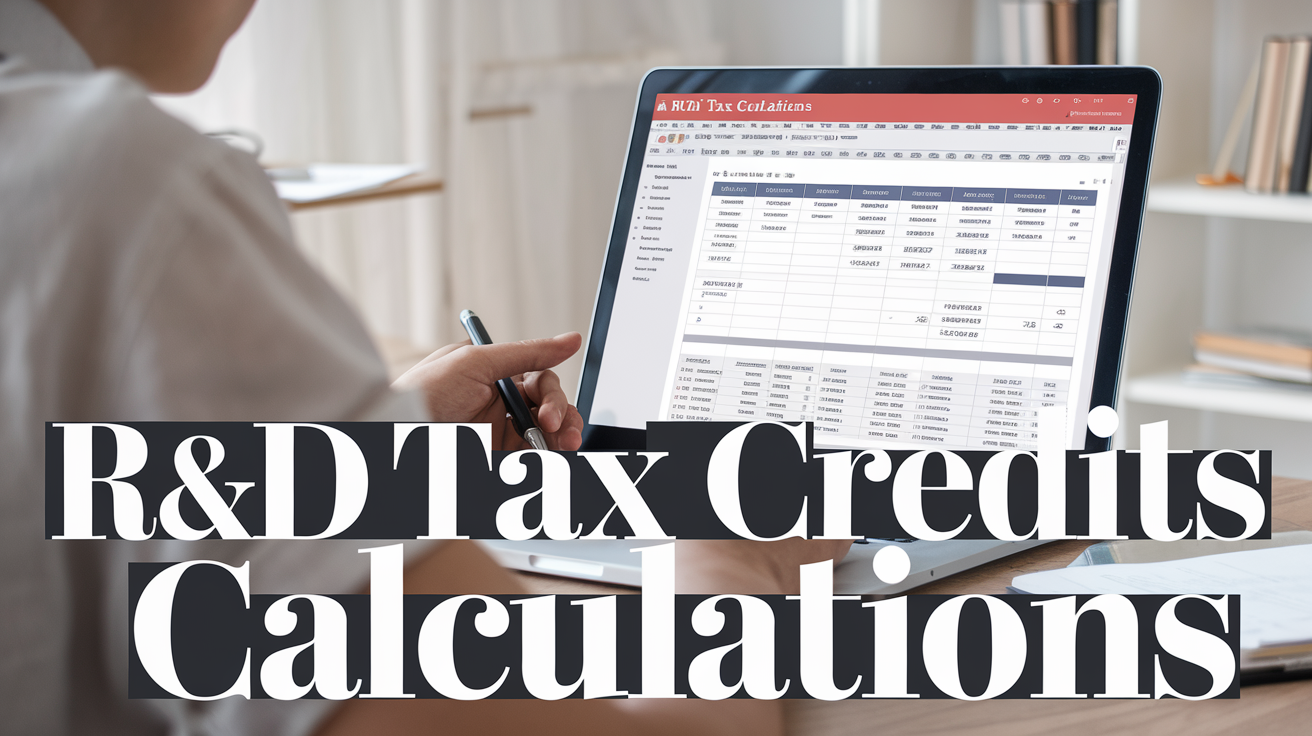R&D Tax Credits Wilmslow Cheshire
R&D tax credits in Wilmslow, Cheshire, are a valuable government incentive designed to reward businesses for their investments in research and development (R&D) activities. These credits enable companies to claim back a significant portion of their R&D expenditure, providing a crucial financial boost. The scheme, administered by HMRC, aims to encourage innovation and technological advancement by offering either a direct cash payment or a reduction in corporation tax liabilities.
For businesses in Wilmslow, claiming R&D tax credits can be a game-changer, especially given the recent changes to the scheme. From April 2023, the Research and Development Expenditure Credit (RDEC) rate has increased to 20%, and a new merged R&D tax relief scheme will be introduced in April 2024, simplifying the process and providing higher benefits for R&D-intensive SMEs. By leveraging these credits, businesses can reduce their tax bills, receive cash refunds if they are loss-making, and reinvest these savings into further innovation and growth. R&D Tax Credits UK can guide you through the complex regulations, ensuring you maximize your claim and comply with all HMRC requirements.

How Do R&D Tax Credits Benefit Wilmslow Businesses?
R&D tax credits can significantly benefit Wilmslow businesses by reducing their tax liability and providing financial incentives for innovation. These credits allow businesses to offset a percentage of their qualifying R&D expenditure against their tax bills.
Financial Advantages
R&D tax credits offer substantial financial benefits to Wilmslow businesses. By claiming these credits, businesses can reduce their corporation tax bill or even receive a cash refund if they are not yet profitable. For example, HMRC allows businesses to claim 33p for every £1 spent on qualifying R&D activities, which can be a significant saving.
Competitive Edge in Innovation
R&D tax credits give Wilmslow businesses a competitive edge in innovation by encouraging investment in research and development. This incentive enables businesses to allocate more resources to developing new products, processes, and software, thereby driving technological advancements and economic growth. For instance, businesses in the manufacturing sector can use these credits to improve production processes, design new products, and enhance product quality, making them more competitive in the market.

Which Industries Commonly Claim R&D Tax Credits?
Businesses across various sectors in the UK frequently claim R&D tax credits, with some industries being more prominent than others. The manufacturing, technology, and life sciences sectors are among the top claimants.
Technology Sector
The technology sector, particularly Information & Communication Technology (ICT) and software development, is a significant beneficiary of R&D tax credits. Companies in this sector often engage in activities such as developing new software, introducing innovative methods of data capture and protection, and advancing computer science and information technology.
Manufacturing
The manufacturing industry is the largest claimant of R&D tax credits, with a substantial number of claims submitted annually. This sector involves continuous innovation to develop new products, processes, and materials, as well as adapting to regulatory changes and improving production efficiency.
Life Sciences
The life sciences sector, including healthcare, pharmaceuticals, and biotechnology, heavily relies on R&D to improve services, products, and treatments. Activities such as developing software solutions for electronic medical records, testing new product prototypes, and reducing side effects of pharmaceuticals are common qualifying R&D activities in this sector.
Others
Other industries that frequently claim R&D tax credits include construction, farming and agriculture, and professional, scientific, and technical services. In construction, companies are innovating in areas like new materials and automated systems. In farming and agriculture, innovations focus on improving production processes and developing new machinery. The professional, scientific, and technical services sector includes architectural, engineering, and scientific research activities that also qualify for R&D tax credits.

What Qualifies as R&D Under UK Tax Law?
To qualify for Research and Development (R&D) tax relief under UK tax law, your company must be undertaking projects that seek to achieve an advance in science or technology by overcoming scientific or technological uncertainties. These uncertainties must not be readily deducible by a competent professional working in the field.
Qualifying Activities
Qualifying R&D activities involve projects that aim to resolve scientific or technological uncertainties. This includes work that seeks to achieve an advance in overall knowledge or capability in a field of science or technology. For example, developing new products, processes, materials, services, or devices that address uncertainties in science or technology qualify for R&D tax relief. The project must demonstrate that it is trying to overcome uncertainties that are not easily resolvable by a professional in the field.
Excluded Activities
Activities that do not qualify for R&D tax relief include those that do not involve overcoming scientific or technological uncertainties. This excludes work that simply applies existing technologies or techniques to a new context without any innovative element. Additionally, advances in the arts, humanities, or social sciences do not qualify. Routine testing or quality control, and work that is not aimed at achieving a scientific or technological advance, are also excluded.

How Are R&D Tax Credits Calculated?
R&D tax credits are calculated based on the qualifying research and development expenditure of your company, with different schemes applying to small and medium-sized enterprises (SMEs) and larger businesses. The calculation involves enhancing your R&D expenditure and then applying the relevant tax relief rates.
SME Scheme
For SMEs, the calculation involves enhancing your R&D expenditure by 130% (though this rate is reducing to 86% for expenditure on or after April 1, 2023).
- If your company is profitable, you multiply the qualifying R&D expenditure by the enhanced rate, and then apply the corporation tax rate to this amount. For example, if you spent £100,000 on R&D, the enhanced amount would be £130,000, and with a corporation tax rate of 25%, the tax relief would be £32,500.
- If your company is loss-making, you can surrender the enhanced R&D relief for a cash credit. For instance, £100,000 of R&D expenditure enhanced to £130,000, plus the original £100,000, gives a total of £230,000. At a surrender rate of 14.5%, this would result in a cash credit of £33,350.
RDEC Scheme
For larger companies using the Research and Development Expenditure Credit (RDEC) scheme, the calculation is different.
- You receive a tax credit of 15% (increased from 10% for expenditure on or after April 1, 2023) of your qualifying R&D expenditure. For example, if you spent £1,000,000 on R&D, the tax credit would be £150,000. This credit is paid net of tax, so after corporation tax, the net credit would be £97,200 (assuming a 19% corporation tax rate).

What Are the Recent Changes to UK R&D Tax Credits?
The UK has introduced significant changes to its R&D tax credit system, effective from April 2023 and April 2024, aimed at simplifying the process, curbing fraud, and supporting innovation. These changes include the merger of the SME and RDEC schemes into a single RDEC-like scheme.
Policy Updates
- RDEC Scheme Changes: The Research and Development Expenditure Credit (RDEC) rate has increased from 13% to 20% from April 2023, providing a higher benefit of up to 16.2% after corporation tax.
- SME Scheme Adjustments: The additional deduction for SMEs has decreased from 130% to 86%, and the SME credit rate has reduced from 14.5% to 10% from April 2023.
- Merged Scheme: Starting April 1, 2024, the SME and RDEC schemes will be merged into a single RDEC-like scheme with a 20% credit rate, applicable to all companies including SMEs and large organisations.
- R&D Intensive SMEs: Loss-making SMEs that spend more than 30% of their total expenditure on R&D can claim a higher rate of up to 27% under the Enhanced R&D Intensive scheme (ERIS).
- Digital Submission: All R&D claims must be submitted online, and additional information such as a breakdown of R&D expenditure must be provided to support claims.
- Subcontracting Changes: R&D Tax Credits will be received by the company conducting the research, and overseas costs for externally provided workers will no longer be eligible except in certain circumstances.
Impact on Businesses
- Simplified Process: The merger of the SME and RDEC schemes aims to simplify the R&D tax relief landscape, making it easier for businesses to claim credits.
- Increased Scrutiny: The new rules include higher scrutiny on claims, requiring a named officer of the company to support claims, which helps protect against unauthorised claims.
- Financial Benefits: The increased RDEC rate and the special scheme for R&D-intensive SMEs provide higher financial benefits, encouraging more investment in R&D activities.
- Corporation Tax Impact: The benefits from R&D tax credits will be treated as taxable income, affecting corporation tax liabilities and potentially boosting financial KPIs such as EBITDA.

How Can Wilmslow Businesses Apply for R&D Tax Credits?
To apply for R&D tax credits, Wilmslow businesses need to ensure their projects meet the definition of Research and Development (R&D) for tax purposes and follow the specific application process outlined by HMRC. This involves identifying qualifying expenditure and submitting the necessary documentation.
Application Process
- Determine Eligibility: Check if your project seeks to achieve an advance in science or technology, overcoming scientific or technological uncertainty, and is related to your company’s trade.
- Identify Qualifying Expenditure: Include costs such as staffing, consumable or transformable materials, certain software, and payments to clinical trials volunteers. For SMEs, this also includes subcontracting costs under specific conditions.
- Calculate Enhanced Expenditure: For SMEs, calculate the enhanced expenditure by adding 130% of the qualifying costs to the normal 100% deduction. If the company is loss-making, convert this into a payable tax credit.
- Notify HMRC: For accounting periods beginning on or after 1 April 2023, submit a claim notification form to notify HMRC in advance of your claim. From 8 August 2023, also submit an additional information form to support your claim.
- Complete the Company Tax Return: Use the Company Tax Return to claim or make an amendment. Complete the single iXBRL computations file and mark the relevant boxes to indicate the submission of the claim notification and additional information forms.
Required Documentation
- Project Details: Provide a detailed explanation of how the project looked for an advance in science or technology, the scientific or technological uncertainty it aimed to overcome, and how it tried to overcome this uncertainty.
- Expenditure Records: Keep accurate records of all qualifying expenditure, including staffing costs, materials, software, and any subcontracting costs. Ensure these records are directly attributable to the R&D project.
- Claim Notification Form: Submit this form to notify HMRC of your intention to claim R&D tax relief for accounting periods beginning on or after 1 April 2023.
- Additional Information Form: Submit this form from 8 August 2023 to provide detailed information supporting your claim.
By following these steps and ensuring you have the necessary documentation, Wilmslow businesses can successfully apply for R&D tax credits and benefit from significant tax savings or cash back from HMRC.

What Common Mistakes Should Be Avoided When Claiming?
When filing your self-assessment tax return, it is crucial to avoid common mistakes that can lead to penalties, audits, and unnecessary stress. HMRC closely monitors all claims, so accuracy and compliance are key.
Overclaiming
Overclaiming expenses or income can trigger HMRC scrutiny and result in penalties. This often occurs when taxpayers claim excessive or inappropriate expenses, such as personal costs masquerading as business expenses. To avoid this, familiarize yourself with HMRC guidelines on deductible expenses and keep organized records and receipts for all claimed expenses, ensuring they are directly related to your business activities.
Underclaiming
Underclaiming expenses or reliefs can result in you paying more tax than necessary. This mistake happens when taxpayers fail to claim all available deductions and credits, such as capital allowances, the Marriage Allowance, or tax relief on pension contributions. Ensure you understand all the deductions and credits available and claim them on your tax return to minimize your tax liability.
Documentation Errors
Documentation errors can lead to significant issues, including penalties and audits. This includes missing or incorrect Unique Taxpayer Reference (UTR) or National Insurance (NI) numbers, incomplete filings, and lack of proper records. Maintain detailed records of all your income sources, expenses, and receipts throughout the tax year. Use accounting software to track your finances accurately and ensure all necessary documents are included in your tax return.

How Can Professional Advice Enhance R&D Tax Credits Claims?
Professional advice can significantly boost your R&D tax credits claims by ensuring you meet all the eligibility criteria and maximize your claim amount. Experts in R&D tax credits can help you navigate the complex regulations and identify all eligible expenses.
R&D Tax Credits Cheshire
If you are a business in the Cheshire area involved in research and development, understanding the R&D tax credits available can be a game-changer for your financial health.
Role of Tax Credit Specialists
Tax credit specialists play a crucial role in helping businesses claim R&D tax credits. Here are some key aspects of their role:
- Identify Eligible Expenditures: They help in identifying all the qualifying R&D expenditures, including direct and indirect activities, to ensure you claim every eligible cost.
- Document R&D Activities: Specialists assist in documenting the uncertainties and planned innovations at the start of a project, providing evidence to support your R&D claim.
- Compliance with Regulations: They ensure that your claims comply with the latest HMRC regulations and guidelines, avoiding any potential disputes or claim rejections.
- Maximize Claim Amount: Experts have the industry knowledge to uncover often-overlooked eligible costs, ensuring you receive the maximum possible tax relief.
Benefits of Expert Guidance
Expert guidance in R&D tax credits offers several benefits:
- Increased Accuracy: Professionals ensure that all claims are accurate and compliant, reducing the risk of errors or omissions that could lead to claim rejection.
- Optimized Claims: With their expertise, you can optimize your claims by including all eligible activities and expenses, thereby increasing the amount of tax relief you receive.
- Simplified Process: Specialists streamline the process of claiming R&D tax credits, making it easier for you to focus on your core business activities while they handle the complexities of the claim.
- Better Cash Flow: By ensuring you receive the maximum tax relief, expert guidance can improve your cash flow, allowing you to reinvest in your business and support further innovation.
By leveraging the expertise of R&D Tax Credits UK, you can ensure that your R&D tax credits claims are handled efficiently and effectively, maximizing the financial benefits for your business.
In Conclusion
R&D tax credits in Wilmslow, Cheshire, are a valuable incentive for businesses investing in research and development, offering significant financial benefits and a competitive edge in innovation. These credits, provided by HMRC, allow companies to claim back a substantial portion of their R&D expenditure, which can be crucial for reinvesting in further innovation, hiring new staff, and driving business growth.
The new merged R&D tax relief scheme, effective from April 2024, simplifies the process by introducing a standard credit rate of 20% for most companies, with potentially higher rates for loss-making SMEs heavily invested in R&D. This change aims to encourage more investment in R&D activities, particularly benefiting industries such as manufacturing, technology, and life sciences.
To maximize the benefits of R&D tax credits, it is essential to seek professional advice. Experts at R&D Tax Credits UK can help identify all eligible expenditures, ensure compliance with the latest regulations, and optimize your claims. By leveraging their expertise, you can improve the accuracy and efficiency of your claims, leading to better cash flow and more resources to reinvest in your business.
If you are a business in the Cheshire area involved in R&D, do not miss out on these valuable tax credits. Contact R&D Tax Credits UK today to ensure you are taking full advantage of the financial incentives available for your innovative projects. Their expert guidance will help you navigate the complex regulations and maximize your claim amount, providing a significant boost to your business’s financial health.

